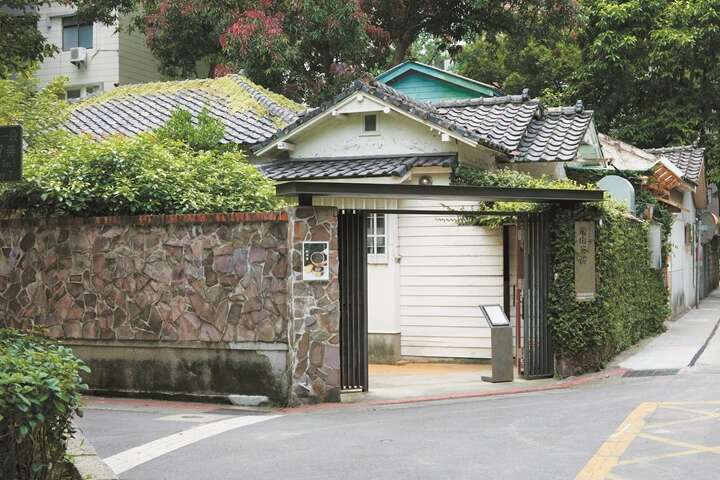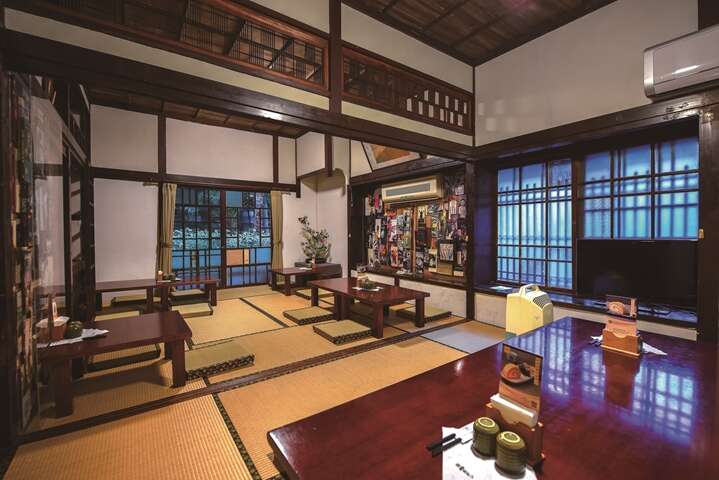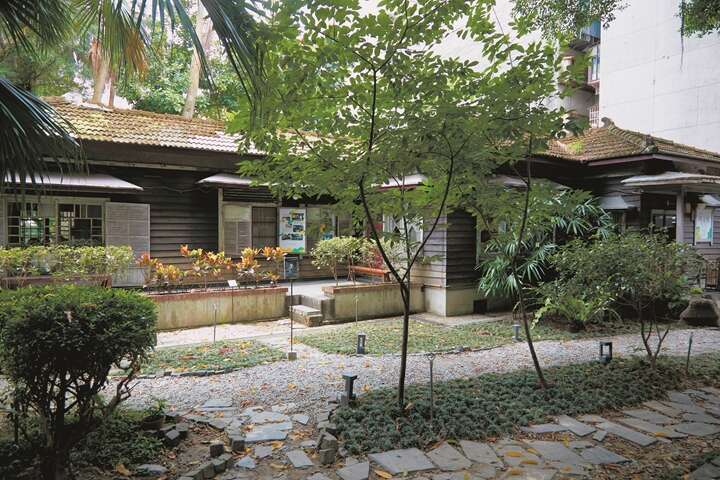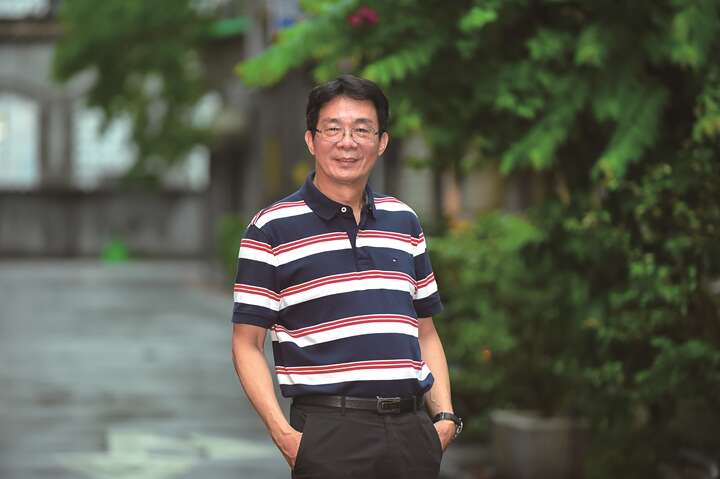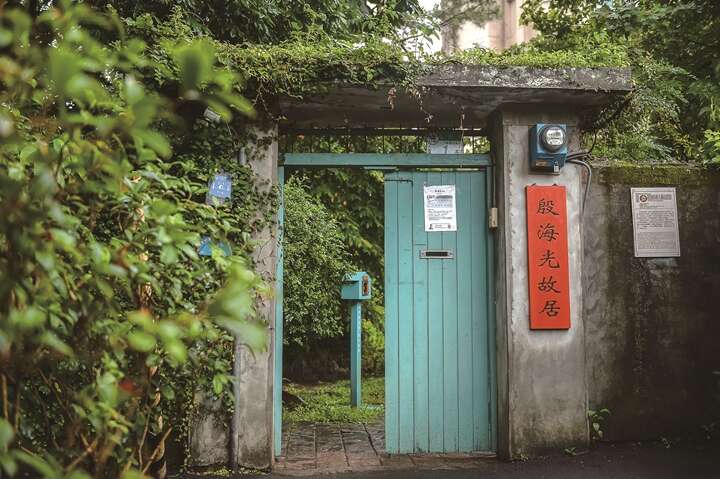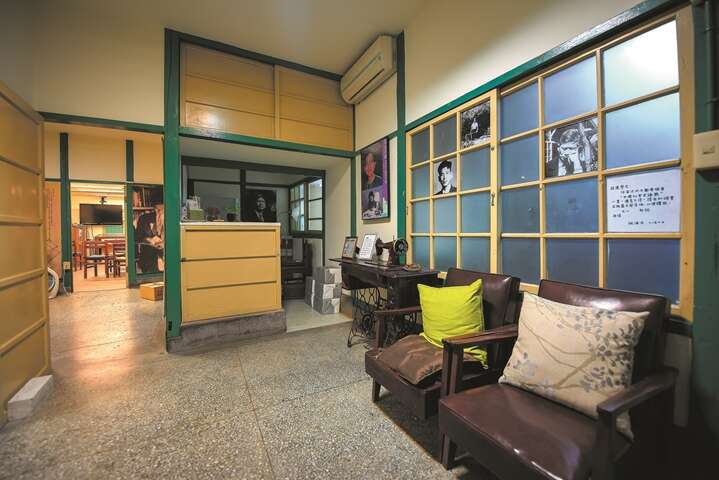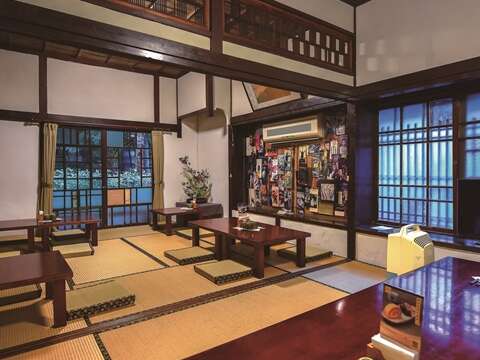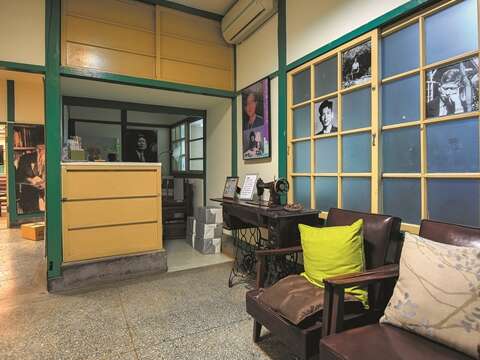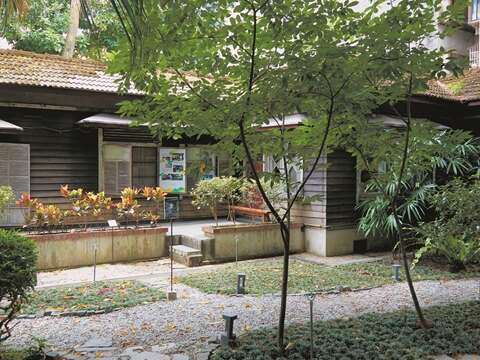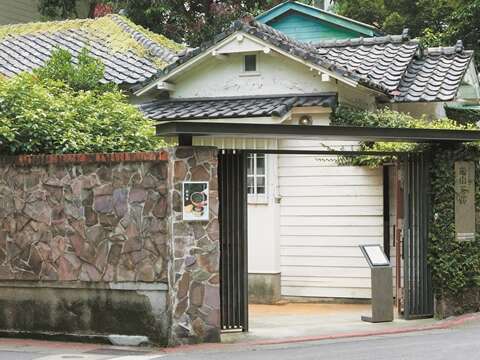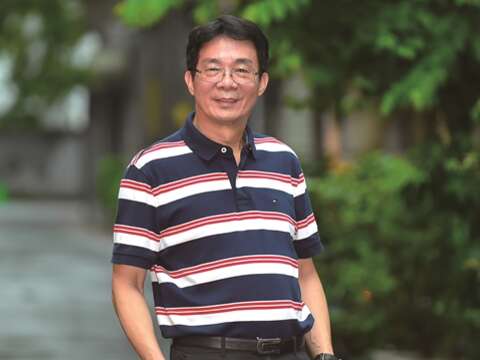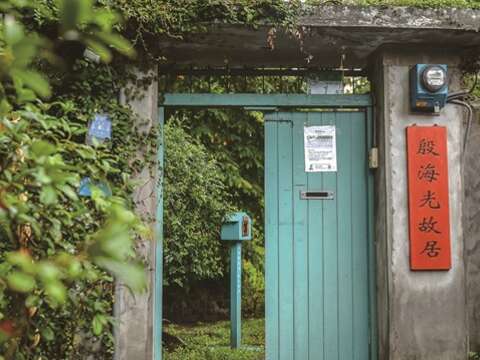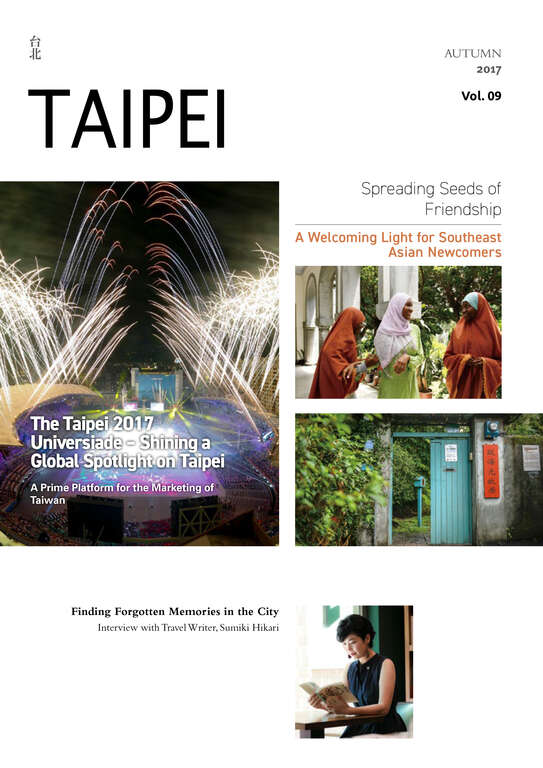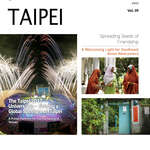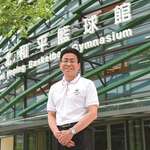Post date:2017-09-13
4540
Tranquil Times in the City
Qingtian Street
A Neighborhood of Old Trees, Old Houses and Humanity
Article|Chen Xieyu Photos|Huang Jianbin, Lin Yixian, Gallery of NTU History
The environs of Daan Park (大安森林公園) are characterized by modern buildings and the busy traffic of a modern city. But if you cross the road and follow the back streets, you will soon come to the ”Emerald of Taipei:” Qingtian Street (青田街), where noise fades into tranquility, and leafy giants stand quietly before rustic wooden houses of the Japanese style . While time passes by, Qingtian Street still retains its elegant look in a gentle attitude.
▲Walking into Qingtian neighborhood, you’ll encounter peaceful back streets, shady old green trees and Japanese style houses–all components of a most elegant atmosphere. (Photo: Lin Yixian)
▲Qingtian 76. (Photo: Huang Jianbin)
The First “Celebrity Village” Where the Elite Choose to Live
“Movie star, Wang Mochou (王莫愁), used to live in the house across from here;” says Longan Village Chief (龍安里), Hong Qiujia (洪秋甲), recalling his boyhood neighborhood. “Former President of the Control Yuan (監察院), Yu Youren (于右任), had a house here too! But now they’re all occupied by new buildings.”
This street was also home to rooming houses for Taipei Imperial University (now National Taiwan University) professors, and many Japanese officials lived here as well. After the Restoration in 1945, these houses became living quarters for National Taiwan University staff, and, as many heavyweight politicians and movie stars love this corner of the city too, it can be called the very first “celebrity village” in Taiwan.
61-year-old Hong remembers the Japanese-style wooden houses that formed 90% of Qingtian Street buildings in his childhood. Verdant trees grew in every family’s yard. Hong grew up in a regular single-storey house, but he sometimes would go and play in a classmate’s Japanese house. The moment he walked in, his nose filled with the aromatic wood that he will forever associate with those clean, airy and comfy abodes .
▲After restoration, Qingtian 76 still retains its rustic, tranquil, warm and gentle Japanese style. (Photo: Lin Yixian)
A Preservation Movement for Old Trees and Houses
With the passing of time and the march of urban development, these old Japanese dwellings and their faithful companion trees inconspicuously disappeared into memory, one after another. One day, as Hong wandered along his old street, he saw someone with a camera. Approaching the person, he asked, “What are you taking pictures of?” and the reply came: “The old trees.” Hong was stopped in his tracks. “Only then did I realize the situation, and ask myself, ‘Why are the trees and houses of my childhood all gone?’” He didn’t want to lose any more, so he decided to take action and organized his neighbors into a “Love Qingtian, Save the Old Trees” campaign in 2003. Unfortunately, most of the trees were already gone, having been in the yards of those old houses. “Once the houses were sold, they were torn down and new buildings built in their place. The trees were long gone.”
In addition to this, abandoned houses quite often became impromptu garbage dumps and can cause security problems too. Therefore, citizens tried to save not only the old trees, but the houses as well. They interviewed neighborhood elders and even organized two trips to Japan to look for former residents. The result of all this research was a treasure trove of historical memories of that time.
Many Japanese who were born and grew up in the Qingtian Street neighborhood took a chance and returned to Taiwan. Hong says with gratification, “Watching those gray-haired grandpas and grandmas standing in front of their old homes, weeping and remembering their childhoods – well, I just thought we did the right thing.”
Save the Old Trees and Houses; Remember History and Culture
There are only about thirty Japanese-style houses left on Qingtian Street. These lucky ones have been taken over and preserved by NGOs, while many other structures have been abandoned and either left derelict or torn down.
The Goldenseeds Education Organization (黃金種子文化事業有限公司) has taken on the task of maintaining “Qingtian 76,” (青田七六) the old residence of Ma Tingying (馬廷英), the late chairman of the NTU’s Geoscience Department. Manager Yang Qingming (楊晴茗) recalls a conversation she had when they first took on this task seven years ago. After deciding to renovate this municipal relic, one day she encountered a taxi driver who thought just the opposite. “Historical site? In this neighborhood, such an eyesore should be torn down and a new building put up to replace it. And compared with historical sites in Mainland China – a few hundred or even thousands of years old! This one is only 80: what’s so historical about it?”
Yang has kept these words in mind. She didn’t have time to think or respond to the cabbie then, but later on when she was supervising construction one very hot day, she had an epiphany. “What I should have said to that taxi driver is: ’Maybe this building is only 80 years old, but if it’s torn down now, it will never be a 100 or 200-year-old building. People won’t even know it ever existed.’”
“Historical buildings–once they are gone, you can never bring them back, and their cultural significance is gone too.” According to Yin Hai-kuang Foundation’s (財團法人紀念殷海光先生學術基金會) executive secretary, Hsieh Jiashin (謝嘉心), since taking over Yin’s old residence, they’ve noticed that Professor Yin is not mentioned in any school history books. Most people don’t know that, besides being an NTU philosophy professor, he was also a pioneer and champion of liberalism in Taiwan. “We hope that when visitors come to this place, they will learn about Yin and this almost forgotten history.
The existence of old trees and houses isn’t just something for the history books, it also preserves the memory in a physical, palpable way. Next time you visit Qingtian Street, take time to appreciate the old trees’ branches and the Japanese houses’ black roofs and white walls. Enjoy a rare and tranquil moment in the city.
▲Yin Hai-kuang’s former residence has a precious historical value. (Photo: Huang Jianbin)
Gallery
Popular articles
 TAIPEI QUARTERLY 2017 AUTUMN Vol.09
TAIPEI QUARTERLY 2017 AUTUMN Vol.09 The Taipei 2017 Universiade – Shining a Global Spotlight on Taipei (TAIPEI QUARTERLY 2017 AUTUMN Vol.09)
The Taipei 2017 Universiade – Shining a Global Spotlight on Taipei (TAIPEI QUARTERLY 2017 AUTUMN Vol.09) Mayor Ko Wen-je – Indefatigable in Transforming Taipei Perfect Finish for the Summer Universiade (TAIPEI QUARTERLY 2017 AUTUMN Vol.09)
Mayor Ko Wen-je – Indefatigable in Transforming Taipei Perfect Finish for the Summer Universiade (TAIPEI QUARTERLY 2017 AUTUMN Vol.09) Dreams and Realization, Behind-the-Scene Heroes of the Universiade (TAIPEI QUARTERLY 2017 AUTUMN Vol.09)
Dreams and Realization, Behind-the-Scene Heroes of the Universiade (TAIPEI QUARTERLY 2017 AUTUMN Vol.09) Let's Give a Cheer for the Taipei 2017 Universiade Grand Opening! (TAIPEI QUARTERLY 2017 AUTUMN Vol.09)
Let's Give a Cheer for the Taipei 2017 Universiade Grand Opening! (TAIPEI QUARTERLY 2017 AUTUMN Vol.09) So Inspiring, Taipei! Universiade Featured Venues Take on a New Look (TAIPEI QUARTERLY 2017 AUTUMN Vol.09)
So Inspiring, Taipei! Universiade Featured Venues Take on a New Look (TAIPEI QUARTERLY 2017 AUTUMN Vol.09)
 Tranquil Times in the City Qingtian Street A Neighborhood of Old Trees, Old Houses and Humanity (TAIPEI QUARTERLY 2017 AUTUMN Vol.09)
Tranquil Times in the City Qingtian Street A Neighborhood of Old Trees, Old Houses and Humanity (TAIPEI QUARTERLY 2017 AUTUMN Vol.09)